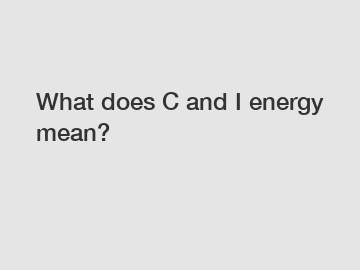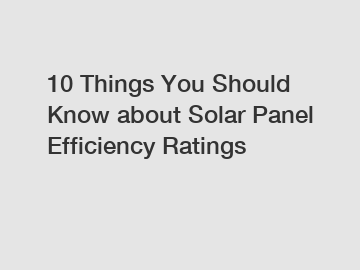First, let's talk about advertised capacity. Don't believe what those other reviewers are telling you. Who knows what standards they are using! According to my handy (and highly trusted) load meter, my
Next, let's talk about maximum battery longevity. Because LiFePO4 batteries don't suffer from any negative side effects when partially charging/discharging them (unlike lead acid batteries that must be kept topped off at all times) I have decided to regularly charge my new lithium batteries to about 80% or so. You see, by only partially charging/discharging LiFePO4 batteries, one can maximize the lifespan of the LiFePO4 battery. Of course, like all batteries, calendar age has its limits. But nevertheless, partial charging/discharging is SIGNIFICANTLY more advantageous than fully charging/discharging.
Now, let's talk about ideal charging parameters. My LiFePO4 batteries are housed in an RV, with a solar system charging them, but the principal is the pretty much the same regardless of application. To achieve any particular SOC, I have learned that all one has to do is lower their boost voltage accordingly. So, for me, I have found that setting a boost voltage of above 14V yields me that 80% SOC to which I prefer. Actually, let me just go ahead and bust out all my charging parameters for y'all, so you can see exactly what I mean:
15.0V = Over Voltage Disconnect Voltage
14.6V = Charging Limit Voltage
14.2V = Over Voltage Reconnect Voltage
14.6V = Boost Voltage (To Achieve 100% SOC) *
* One day a month I set my boost voltage to 14.6V to ensure that proper internal cell balancing takes place, which evidently doesn't start occurring until after 14.2V or so.
14.2V = Boost Voltage (To Also Achieve 100% SOC) *
* Technically, to achieve 100% charge capacity, 14.2V is good enough, and is theoretically a safer setting to use than 14.6V so as to ensure that any imbalanced cells in the mix don't get as easily over-charged. I may indeed settle on 14.2V rather than 14.6V. I'm still on the fence about this one.
* Boost duration is not really needed when partial charging, but my charge controller needs something, and it offers a minimum of 10 minutes, so I took it. I mean, technically, one could set a longer boost time in conjunction with a lower (safer) boost voltage, so as to still achieve 100% SOC if one so wishes (but whereby charging to that 100% SOC will take more time).
Low Temperature Charging Cutoff = 5°C *
* This will be the most ideal (and safest) low temperature cutoff for most people.
Time for the fun part! Let's talk about charging near freezing temperatures. It's actually not a "hard cliff" as a lot of technical literature (and reviews) seem to claim it is.
for example, at 5°C I can safely charge my AH (4x300AH) 12V battery bank at a rate of 240 amps/hr up to 60% SOC, then 180 amps/hr up to 90% SOC, then 120 amps/hr up to 100% SOC. Of course, I'll never see those charging rates come out of my particular solar panel setup, as I top out at roughly 80 amps/hr in the summer, and 50 amps/hr in the winter. So I'm more than set here! The important thing to understand though, is that, contrary to popular belief on the subject, one CAN -- and quite safely so -- charge their batteries at or near freezing temperatures (approximately 5'), as long as they don't exceed the specified charging speed per AH capacity as presented in the table.
Of course, for extra-super-overkill safety, I went ahead and installed individual water tank heating pads under each of my batteries anyways, which were then wired to four independently controlled external thermostats, all so as to ensure than I never even come close to risking damaging my LiFePO4 batteries during the winter. For one: my batteries can be heated long before the sun comes up (thereby rendering them ready to accept a charge right at sunrise rather than several hours after). And two: my four paralleled batteries stay 100% in balance to each other 100% of the time (because of how they don't draw power from themselves on an individual basis in order to heat themselves, but rather cumulatively draw power as a whole from the bank as a whole).
Anyways, time for a summary of all my ideal charging/discharging and maintenance practices:
- When paralleling, first charge each battery separately to full, then parallel each to each other for a day, one by one, until all are paralleled, then start using them
- Also when paralleling, ensure that all batteries are balanced to between 0.02V and 0.05V of each other
- Keep battery temperatures between 5°C and 45°C (20°C ~ 30°C if possible)
- Keep charging/discharging rates under 0.5C (0.2C if possible)
- Fully charge (to 100%) and discharge (to 0%) once a month (to allow for proper cell/battery balancing to occur)
- Avoid cycling below 20% SOC unless absolutely necessary
- Avoid leaving batteries in a deeply discharged stage (20% or less) for very long
Also, I should note that I did test my batteries for low-voltage cutoff, and they DID each cutoff at around 9.8V, which I was told by the manufacturer is within spec. So no worries here, either.
Well that's pretty much it, for now! Overall, I am % pleased with my super-major four
PS- Ampere Time tech support has been great, for the few questions I have had for them. Honestly, one of the better companies I have had the pleasure of doing business with! Go Ampere Time!
PPS- Don't forget to buy a few DC meters w/ shunts, and install them accordingly so that you can keep track of precisely how many watts you're putting into / taking out of your battery bank! Absolutely priceless information can be gleamed with such tools. I have four hooked up so that I can know, at all times, a) what's coming in from solar, b) what's going to my battery bank, c) what's coming from my battery bank, and d) what's going to my 12V system.
As a techie, I always like to do a bunch of research before I buy a product, and then share what I learn with the community! That way I can save y'all some time in finding such information yourselves. )First, let's talk about advertised capacity. Don't believe what those other reviewers are telling you. Who knows what standards they are using! According to my handy (and highly trusted) load meter, my 12V 300AH lifepo4 batteries (from Ampere Time ) are each offering just over their rated capacities (see attached picture for an example of one particular battery). So no issues here! Quite the technological leap forward when compared to lead acid battery capacities, I must say, which can't be safely discharged past a pathetic 60% SOC!Next, let's talk about maximum battery longevity. Because LiFePO4 batteries don't suffer from any negative side effects when partially charging/discharging them (unlike lead acid batteries that must be kept topped off at all times) I have decided to regularly charge my new lithium batteries to about 80% or so. You see, by only partially charging/discharging LiFePO4 batteries, one can maximize the lifespan of the LiFePO4 battery. Of course, like all batteries, calendar age has its limits. But nevertheless, partial charging/discharging is SIGNIFICANTLY more advantageous than fully charging/discharging.Now, let's talk about ideal charging parameters. My LiFePO4 batteries are housed in an RV, with a solar system charging them, but the principal is the pretty much the same regardless of application. To achieve any particular SOC, I have learned that all one has to do is lower their boost voltage accordingly. So, for me, I have found that setting a boost voltage of above 14V yields me that 80% SOC to which I prefer. Actually, let me just go ahead and bust out all my charging parameters for y'all, so you can see exactly what I mean:15.0V = Over Voltage Disconnect Voltage14.6V = Charging Limit Voltage14.2V = Over Voltage Reconnect Voltage14.6V = Boost Voltage (To Achieve 100% SOC) ** One day a month I set my boost voltage to 14.6V to ensure that proper internal cell balancing takes place, which evidently doesn't start occurring until after 14.2V or so.14.2V = Boost Voltage (To Also Achieve 100% SOC) ** Technically, to achieve 100% charge capacity, 14.2V is good enough, and is theoretically a safer setting to use than 14.6V so as to ensure that any imbalanced cells in the mix don't get as easily over-charged. I may indeed settle on 14.2V rather than 14.6V. I'm still on the fence about this one.* Boost duration is not really needed when partial charging, but my charge controller needs something, and it offers a minimum of 10 minutes, so I took it. I mean, technically, one could set a longer boost time in conjunction with a lower (safer) boost voltage, so as to still achieve 100% SOC if one so wishes (but whereby charging to that 100% SOC will take more time).Low Temperature Charging Cutoff = 5°C ** This will be the most ideal (and safest) low temperature cutoff for most people.Time for the fun part! Let's talk about charging near freezing temperatures. It's actually not a "hard cliff" as a lot of technical literature (and reviews) seem to claim it is.for example, at 5°C I can safely charge my AH (4x300AH) 12V battery bank at a rate of 240 amps/hr up to 60% SOC, then 180 amps/hr up to 90% SOC, then 120 amps/hr up to 100% SOC. Of course, I'll never see those charging rates come out of my particular solar panel setup, as I top out at roughly 80 amps/hr in the summer, and 50 amps/hr in the winter. So I'm more than set here! The important thing to understand though, is that, contrary to popular belief on the subject, one CAN -- and quite safely so -- charge their batteries at or near freezing temperatures (approximately 5'), as long as they don't exceed the specified charging speed per AH capacity as presented in the table.Of course, for extra-super-overkill safety, I went ahead and installed individual water tank heating pads under each of my batteries anyways, which were then wired to four independently controlled external thermostats, all so as to ensure than I never even come close to risking damaging my LiFePO4 batteries during the winter. For one: my batteries can be heated long before the sun comes up (thereby rendering them ready to accept a charge right at sunrise rather than several hours after). And two: my four paralleled batteries stay 100% in balance to each other 100% of the time (because of how they don't draw power from themselves on an individual basis in order to heat themselves, but rather cumulatively draw power as a whole from the bank as a whole).Anyways, time for a summary of all my ideal charging/discharging and maintenance practices:- When paralleling, first charge each battery separately to full, then parallel each to each other for a day, one by one, until all are paralleled, then start using them- Also when paralleling, ensure that all batteries are balanced to between 0.02V and 0.05V of each other- Keep battery temperatures between 5°C and 45°C (20°C ~ 30°C if possible)- Keep charging/discharging rates under 0.5C (0.2C if possible)- Fully charge (to 100%) and discharge (to 0%) once a month (to allow for proper cell/battery balancing to occur)- Avoid cycling below 20% SOC unless absolutely necessary- Avoid leaving batteries in a deeply discharged stage (20% or less) for very longAlso, I should note that I did test my batteries for low-voltage cutoff, and they DID each cutoff at around 9.8V, which I was told by the manufacturer is within spec. So no worries here, either.Well that's pretty much it, for now! Overall, I am % pleased with my super-major four Ampere Time 12V 300AH LiFePO4 battery purchase, of which I have had running for a couple of months now without a single hiccup, and to which I plan on running for the next 10-20 years without issue as well. In more ways than I have fingers to count with, LiFePO4 batteries are simply orders of magnitude better than their lead acid counterparts. I'm so glad the cost for them has come down over the years, and is now within reach for most of us off-gridders! As long as you treat them well, I strongly believe they will return the favor. =)PS- Ampere Time tech support has been great, for the few questions I have had for them. Honestly, one of the better companies I have had the pleasure of doing business with! Go Ampere Time!PPS- Don't forget to buy a few DC meters w/ shunts, and install them accordingly so that you can keep track of precisely how many watts you're putting into / taking out of your battery bank! Absolutely priceless information can be gleamed with such tools. I have four hooked up so that I can know, at all times, a) what's coming in from solar, b) what's going to my battery bank, c) what's coming from my battery bank, and d) what's going to my 12V system.
Please visit our website for more information on this topic.
Exploring Strategies for Extending LiFePO4 Battery Life
Introduction
In the world of rechargeable batteries, LiFePO4, or Lithium Iron Phosphate, has gained significant attention for its numerous advantages, including high energy density and longer lifespan. Understanding the factors that influence LiFePO4 battery lifespan is crucial for maximizing their efficiency and durability.
Factors Affecting LiFePO4 Battery Lifespan
Temperature Considerations
LiFePO4 batteries operate optimally within a specific temperature range. Extreme heat or cold can accelerate degradation, affecting overall performance and longevity.
Depth of Discharge (DOD)
The depth to which a LiFePO4 battery is discharged significantly impacts its lifespan. Shallower discharges contribute to prolonged battery life.
Charging Voltage
Maintaining the proper charging voltage is critical. Overcharging can lead to heating and reduced lifespan, while undercharging may result in incomplete cycles, affecting overall capacity.
Charging and Discharging Cycles
The number of charge and discharge cycles a LiFePO4 battery undergoes influences its overall lifespan. Managing these cycles efficiently is key to maximizing longevity.
Optimal Operating Conditions
Ideal Temperature Range
LiFePO4 batteries perform best within a specific temperature range, usually between 20°C and 45°C. Storing or operating them outside this range may compromise their performance.
Recommended DOD Levels
To extend LiFePO4 battery lifespan, it is advisable to maintain a moderate depth of discharge, ideally between 20% and 80%, rather than regularly discharging it fully.
Proper Charging Voltage
Ensuring the correct charging voltage, typically between 3.2V and 3.6V per cell, prevents overcharging and safeguards the battery from potential damage.
Managing Charging and Discharging Cycles
Carefully monitoring and managing the number of charging and discharging cycles helps maintain optimal performance over an extended period.
Common Misconceptions
Myth: LiFePO4 Batteries Don't Degrade
Contrary to popular belief, LiFePO4 batteries do experience degradation, although at a slower rate compared to some other lithium-ion chemistries.
You will get efficient and thoughtful service from GECONA SOLAR.
Featured content:[Full Guide] How Do You Store LiFePO4 Lithium Batteries2KWh 512V Lithium Iron Phosphate Container10 Questions You Should Know About Containerized Battery Energy Storage SystemsThe Benefits of Utilizing Renewable Energy Solutions for BusinessesA Complete Guide to Choosing the Right Outdoor Solar ...How to Select the Most Affordable Containerized Energy Storage System?Best 3 kva inverter for purchase stage marketing funnel?
Clarification on Self-Discharge Rates
LiFePO4 batteries have lower self-discharge rates, but it's crucial to note that they are not entirely immune. Periodic charging is essential to counteract self-discharge.
Overcharging and Its Impact
Overcharging can lead to increased temperatures within the battery, accelerating degradation. Employing effective charging control mechanisms is vital.
Testing LiFePO4 Battery Health
Understanding Battery Capacity
Regularly assessing the battery's capacity ensures that it continues to meet the specified requirements. Capacity testing helps identify any potential issues.
Voltage and Internal Resistance Testing
Periodic checks on voltage and internal resistance provide insights into the battery's health and performance. Deviations from standard values may indicate problems.
Periodic Maintenance Tips
Simple yet effective maintenance practices, such as cleaning terminals and ensuring proper ventilation, contribute to sustained battery health.
Extending LiFePO4 Battery Lifespan
Implementing Proper Storage Techniques
Storing LiFePO4 batteries in a cool, dry place with a partial charge helps prevent degradation during periods of inactivity.
Regular Maintenance Practices
Routine inspections, cleaning, and addressing any issues promptly contribute to prolonging LiFePO4 battery lifespan.
Utilizing Battery Management Systems (BMS)
Implementing BMS technology ensures optimal charging and discharging, preventing overcharging or discharging, which can harm the battery.
Real-life Applications and Success Stories
Showcasing Examples of Prolonged LiFePO4 Battery Usage
Highlighting instances where LiFePO4 batteries have demonstrated exceptional longevity in various applications.
Case Studies on Optimized Battery Management
Examining real-world cases where meticulous battery management practices have resulted in extended lifespans.
Environmental Impact of LiFePO4 Batteries
Comparing LiFePO4 to Other Battery Chemistries
Assessing the environmental impact of LiFePO4 batteries compared to traditional lithium-ion batteries and other chemistries.
Recycling and Disposal Considerations
Exploring eco-friendly options for recycling and disposing of LiFePO4 batteries responsibly.
Future Trends in LiFePO4 Battery Technology
Ongoing Research and Developments
Highlighting the latest advancements and ongoing research in LiFePO4 battery technology.
Potential Advancements for Increased Lifespan
Discussing potential innovations that could further enhance the already impressive lifespan of LiFePO4 batteries.
Conclusion
In conclusion, understanding and implementing the factors that influence LiFePO4 battery lifespan are paramount for users seeking optimal performance and longevity. By adhering to recommended operating conditions, conducting regular testing, and adopting responsible usage practices, users can unlock the full potential of LiFePO4 batteries.
Edit by editor
For more Home Solar Lithium 48v 200ah LiFePO4 Batteryinformation, please contact us. We will provide professional answers.










Comments
Please Join Us to post.
0